Research
Working Papers
3) Impressions for a Lifetime: Youth Exposure to Immigration and Anti-immigrant Sentiment in Germany
(joint with Mariapia Mendola and Marco Scipioni)
Abstract
We examine the impact of exposure to immigrants during formative years on attitudes toward immigration later on in life. Our research design combines granular administrative data on immigrant shares in Germany with unique longitudinal individual-level data on immigration sentiments. Using panel fixed-effect estimates, identification leverages both spatial variation at critical ages and time variation induced by birth cohorts. We find that individuals exposed to higher shares of immigrants in formative years exhibit more negative attitudes toward immigration in adulthood. The impact is small in magnitude but specific to critical age and robust to contemporaneous immigration exposure. Our findings suggest that early and unmediated exposure to a diverse social and ethnic environment may have long-lasting consequences for the formation of immigration preferences.
2) Unpacking the Countercyclicality of Post-Secondary Enrollment in the United States
(joint with Alena Bicáková, Matias Cortes, Kelly Foley and Peter McHenry) (R&R at: Economics of Education Review)
IZA DP No. 18244
Abstract
Using data from the Current Population Survey’s Education Supplement for 1977-2023, we explore two important, yet understudied facets of the pattern of countercyclical post-secondary education (PSE) enrollment in the U.S. First, we show that economic downturns are associated with higher enrollment probabilities at both 2- and 4-year colleges among young men, but only at 2-year institutions among young women. Second, we show that the overall increase in enrollment propensities during downturns is primarily driven by persistence (i.e., changes in enrollment among individuals with prior PSE participation), rather than matriculation (i.e., new enrollments). However, higher unemployment rates increase matriculation probabilities at 2-year colleges among 18-year-old men and women, and at 4-year colleges among individuals in their early 20s. Our findings improve our understanding of the dimensions along which aggregate economic fluctuations induce changes in human capital acquisition.
1) Unequal Starts, Diverging Paths: The Role of Education and Risk in Wage Dynamics
(joint with Hans van Ophem)
Abstract
Wages differ considerably across educational levels and sexes. To what extent can these differences be attributed to differences in the initial or starting wage and differences in wage growth? To investigate this, we build a model that allows for the endogeneity of schooling in both the initial wage and wage growth. We aim to introduce as few assumptions as possible, and in particular, we avoid making distributional assumptions. Our empirical analysis of the NLSY79 survey reveals that wage growth follows economic theory: wages grow in time but at a diminishing rate, and there is a negative relation between initial wages and wage growth for each educational level. Highereducated individuals get a better initial wage and experience stronger wage growth. The difference in wage growth between sexes is significant at higher educational levels: women experience about 45% less wage growth than comparable men. At the highest level of education, the starting salary of women is more than 10 % higher than that of men, while at lower levels of education, women start earning 15-20% less. After estimating the schooling level choice, we can distinguish observed and potential wage inequality, risk, and unobserved heterogeneity. Unobserved heterogeneity appears to be irrelevant.
Work in Progress
Enrolling in Bad Times: College Persistence and Labor Market Outcomes
(joint with Alena Bicáková, Matias Cortes, Kelly Foley and Peter McHenry)
Abstract
Using administrative data covering the universe of student enrollments in public universities in Canada since 2009, we show that individuals who start an undergraduate degree when unemployment is high are less likely to graduate within five years. Compositional changes along observable student characteristics including gender, age at enrollment, and parental income do not account for this result, nor does sorting across universities or fields of study. While a simple model of negative selection into university during downturns can account for the decline in graduation rates, it would imply that post-schooling earnings should be lower among non-completers who enroll during high unemployment periods compared to those who enroll when unemployment is lower. Using a panel of administrative tax data linked to the student enrollment records, we show that higher unemployment rates at enrollment are not associated with lower annual earnings among non-completers. A model that features heterogeneity in the idiosyncratic costs of post-secondary education can rationalize this result.
Journal Publications
9) 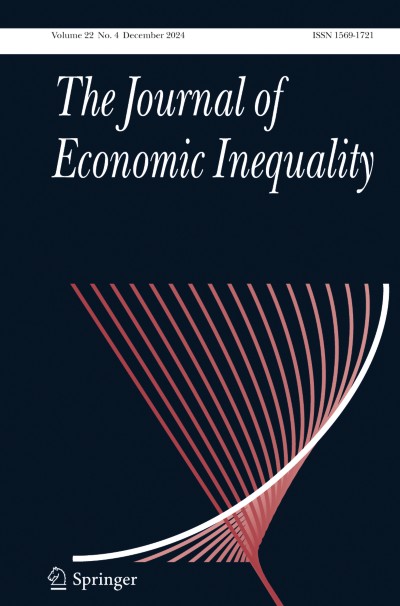 Immigrant Key Workers: Their Contribution to Europe’s COVID-19 Response, Journal of Economic Inequality, (2025).
Immigrant Key Workers: Their Contribution to Europe’s COVID-19 Response, Journal of Economic Inequality, (2025).
(joint with Francesco Fasani)
Open Access
Download bibtex citation
Abstract
This paper contributes to the literature on the unequal effects of Covid-19 on workers and labor markets by focusing on the experience of migrant key workers in EU countries. Using survey data on over 2.7 million workers, our analysis explores three main dimensions. First, we document the over-representation of migrant workers in key occupations, particularly in low-qualified roles. Second, we examine the selection into key occupations. According to our estimates, women are more likely to be key workers, the relationship with education is V-shaped, and EU and Extra EU migrants are, respectively, 12 and 15 percent more likely than comparable natives to be key workers. Migrant women almost entirely drive these latter gaps. Finally, we estimate the labor market impact of Covid-19, showing that migrant key workers endured reductions in working hours similar to those of natives during the pandemic, but faced a 3 times higher increase in job loss probability. Our findings imply that although migrant workers played a crucial role in the response to the pandemic, they endured a harsher fate than native workers.
8)  Educational Choice, Initial Wage and Wage Growth, Empirical Economics, (2024), vol. 67, pp. 1235-1274.
Educational Choice, Initial Wage and Wage Growth, Empirical Economics, (2024), vol. 67, pp. 1235-1274.
(joint with Hans van Ophem)
Link to published version
Download bibtex citation
Abstract
We study the effects of expected initial wages, expected wage growth, and observed and unobserved heterogeneity in the choice of college major in a sample of American college graduates. We propose a three-stage empirical model that relates future earnings to individual choices. In the first stage, starting from revealed choices, observed wages, and life-cycle wage profiles, we estimate the expectation on initial wages and wage growth from the individual point of view, where the panel structure of the data allows us to produce estimates corrected for self-selection bias. We find substantial differences in expected real wages and expected real wage growth between majors and that both characteristics of life cycle earnings influence major choice. Our parametric models show a strong correlation between salary trends and major choice, whereas semiparametric models yield less reliable results. We interpret our results as being consistent with agents being rational and as a validation for our estimation strategy based on counterfactual imputation.
7)  Being on the Frontline? Immigrant Workers in Europe and the COVID-19 Pandemic, ILR Review, (2023), vol. 76(5), pp. 890-918.
Being on the Frontline? Immigrant Workers in Europe and the COVID-19 Pandemic, ILR Review, (2023), vol. 76(5), pp. 890-918.
(joint with Francesco Fasani)
Link to published version
Download replication package
Download bibtex citation
Media Covearge: Le Temps (In French);
Abstract
We provide the first systematic assessment of the impact of COVID-19 on the labor market for immigrant workers in Europe. In 2020, we estimate that extra-EU migrants were twice as likely to experience employment loss relative to comparable natives, while this probability was 1.6 times higher for EU migrants. To understand the determinants of these large gaps, we focus on three job characteristics - \textit{essentiality}, \textit{temporariness}, and \textit{teleworkability} - and document that migrants were overrepresented among essential, temporary, and low teleworkable occupations at the onset of the pandemic. We estimate that prepandemic occupational sorting accounts for 25-35\% of the explained native-migrant gaps in the risk of employment termination while sorting into industries accounts for the rest of the explained part. Yet, more than half of the migrant-native gap in job separation probability remains unexplained, even when controlling for occupational characteristics and industry fixed effects. According to our estimates, migrants face a disproportionately large penalty for being employed in low-teleworkable occupations. Although major employment losses were averted thanks to the massive use of short-time work programs in Europe, migrant workers and extra-EU migrants, in particular, still suffered from high economic vulnerability during the pandemic.
6) 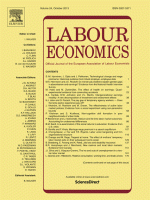 Make Your Own Luck: The Wage Gains from Starting College in a Bad Economy, Labour Economics, (2023), 84, 102411.
Make Your Own Luck: The Wage Gains from Starting College in a Bad Economy, Labour Economics, (2023), 84, 102411.
(joint with Alena Bicáková and Matias Cortes)
Link to published version
Download slides
Download replication package
Download bibtex citation
Abstract
Using data for nearly 40 cohorts of American college graduates and exploiting regional variation in economic conditions, we show robust evidence of a positive relationship between the unemployment rate at the time of college enrollment and subsequent annual earnings, particularly for women. This positive relationship cannot be explained by selection into employment or by economic conditions at the time of labor market entry. Up to one quarter of the effect is accounted for by changes in field of study choices and by sorting towards more remunerative locations. The results are consistent with a behavioral change that induces individuals who experience bad economic times at the beginning of their studies to exert more effort towards obtaining higher-paying jobs.
5) 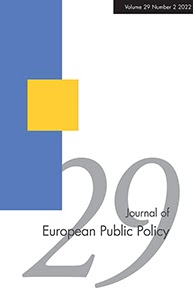 The Gender Gap in Support for Governments During the COVID Crisis, Journal of European Public Policy, (2023), vol. 30(2), pp. 254–270.
The Gender Gap in Support for Governments During the COVID Crisis, Journal of European Public Policy, (2023), vol. 30(2), pp. 254–270.
(joint with Marco Scipioni)
Open Access
Download bibtex citation
Abstract
Using data covering most European Union Member States, we study how the support for national governments has unravelled in the first months of the COVID pandemic. Motivated by the growing evidence on the uneven economic impact of this crisis across genders, we study if such unequal economic burden is related to differences in support for public authorities between men and women. While the support for national governments has overall faded in the period considered, the decline has been more pronounced for women, and working women in particular. We find indication that the decline in support signals a shift in concerns among Europeans, and women in particular, from the health emergency to the economic consequences of the pandemic. We impute up to a third of the widening gender gap in support for government to the shift of emphasis from the health to the economic dimension of the crisis.
4) 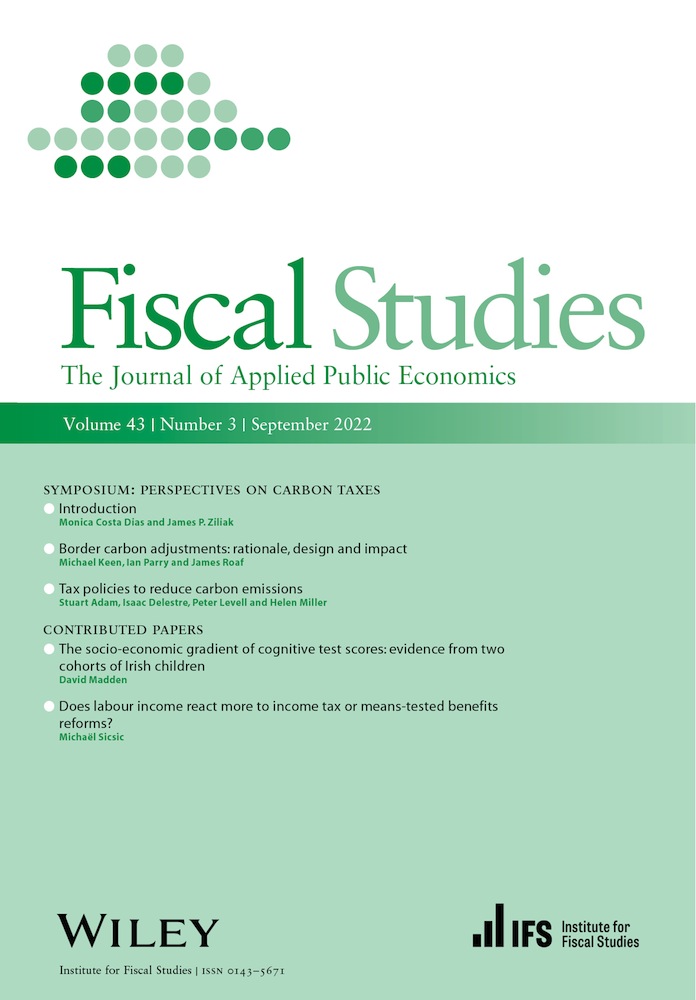 Projecting the fiscal impact of immigration in the European Union, Fiscal Studies, (2022), vol. 43(4), pp. 365–385.
Projecting the fiscal impact of immigration in the European Union, Fiscal Studies, (2022), vol. 43(4), pp. 365–385.
(joint with Michael Christl, Alain Bélanger, Alessandra Conte and Edlira Narazani)
Open Access
Download bibtex citation
Abstract
The increasing flow of immigrants into Europe over the last decade has generated a range of considerations in the policy agenda of many receiving countries. One of the main considerations for policy makers and public opinion alike is whether immigrants contribute their ``fair'' share to their host country's tax and welfare system. In this paper, we assess the net fiscal impact of intra- and extra-EU migration in 27 EU Member States. We find that migrants in the EU, on average, contribute more than natives to welfare states. However, when we take an age-specific life-cycle perspective, we find that natives generally show a higher net fiscal contribution than both groups of migrants. Among migrants, extra-EU migrants contribute less than intra-EU migrants. We then use a demographic micro-simulation model to project the potential net fiscal impact of migration in the EU into the future. We show that despite the fact that intra-EU migration contributes to reducing the strong negative impact of population ageing, its contribution is not sufficient to offset the negative fiscal consequences.
3) 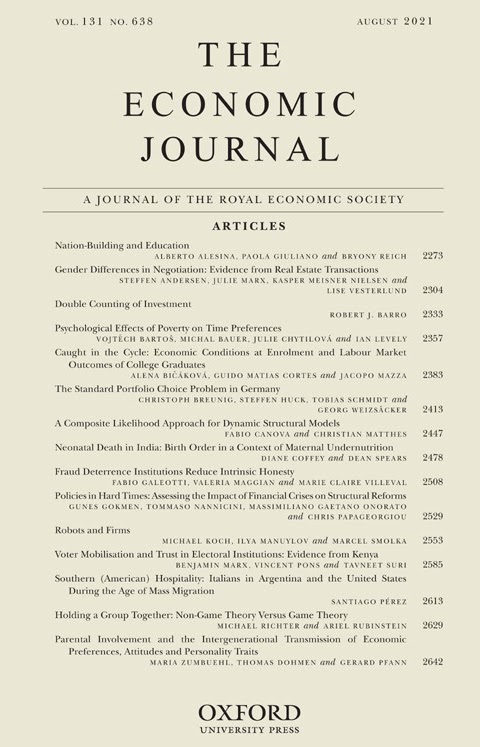 Caught in the Cycle: Timing of Enrolment and Labour Market Performance of University Graduates, The Economic Journal, (2021), vol. 131(638), pp. 2383–2412.
Caught in the Cycle: Timing of Enrolment and Labour Market Performance of University Graduates, The Economic Journal, (2021), vol. 131(638), pp. 2383–2412.
(joint with Alena Bicáková and Matias Cortes)
Link to published version Download bibtex citation
Abstract
We show that cohorts of male graduates who start college during worse economic times earn higher average wages than those who start during better times. This is not explained by differences in selection into employment, economic conditions at graduation, or field of study choices. Graduates who enrol in bad times are not more positively selected based on their high-school outcomes, but they achieve higher college grades and earn higher wages conditional on their grades. Patterns for female graduates are similar, though less robust. Our results suggest that individuals who enrol during downturns exert more effort during their studies.
2) 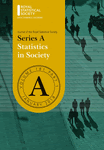 Separating Risk in Education from Heterogeneity: a Semiparametric Approach, Journal of the Royal Statistical Society: Series A, (2018), vol. 181(1), pp. 249-275.
Separating Risk in Education from Heterogeneity: a Semiparametric Approach, Journal of the Royal Statistical Society: Series A, (2018), vol. 181(1), pp. 249-275.
(joint with Hans van Ophem)
Link to published version Download bibtex citation
Abstract
Returns to education are variable both within and between educational group. If uncertain payoffs are a concern to individuals when selecting an education, wage variance is relevant. The variation is a combination of unobserved heterogeneity and pure uncertainty or risk. The first element is known to the individual, but unknown to the researcher, the second is unknown to both. As a result, the variance of wages observed in the data will overestimate the real magnitude of educational uncertainty and the impact that risk has on educational decisions. In this paper we apply a semiparametric estimation technique to tackle the selectivity issues. This method does not rely on distributional assumptions of the errors in the schooling choice and wage equations. Our results suggest that risk is decreasing in schooling. Private information accounts for a share varying between 0% and 13% of total wage variance observed depending on the educational level. Finally, we conclude that the estimation results are very sensitive to the functional relation imposed on the error structure.
1)  Unobserved Heterogeneity and Risk in Wage Variance: Does Schooling Provide Earnings Insurance?
Unobserved Heterogeneity and Risk in Wage Variance: Does Schooling Provide Earnings Insurance?
Labour Economics, (2013), vol. 24(C), pp. 323-338.
(joint with Hans van Ophem and Joop Hartog)
Link to published version Download bibtex citation
Abstract
We apply a recently proposed method to disentangle unobserved heterogeneity from risk in returns to education to data for the USA, the UK and Germany. We find that in residual wage variation, uncertainty by far dominates unobserved heterogeneity. The relation between uncertainty and level of education is not monotonic and differs among countries.